Grevillea x gaudichaudii
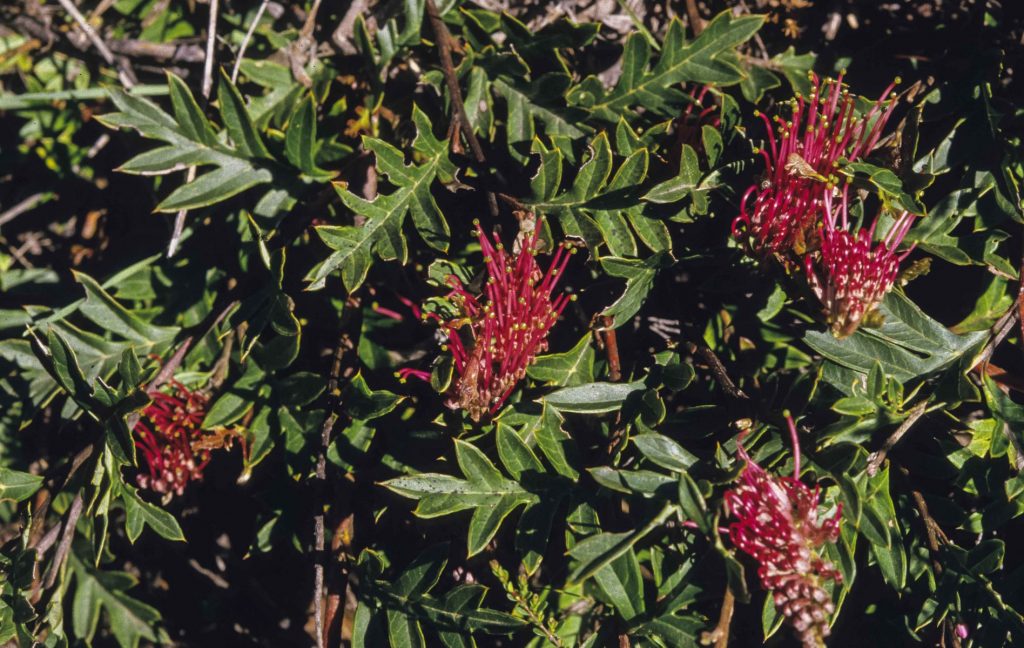
Grevillea x gaudichaudii – A groundcover shrub to about 0.3 m tall and spreading to 3 m wide. It is a naturally occurring hybrid of Grevillea acanthifolia subsp. acanthifolia and Grevillea laurifolia originating in the Blue Mountains of NSW.
Grevillea kedumbensis
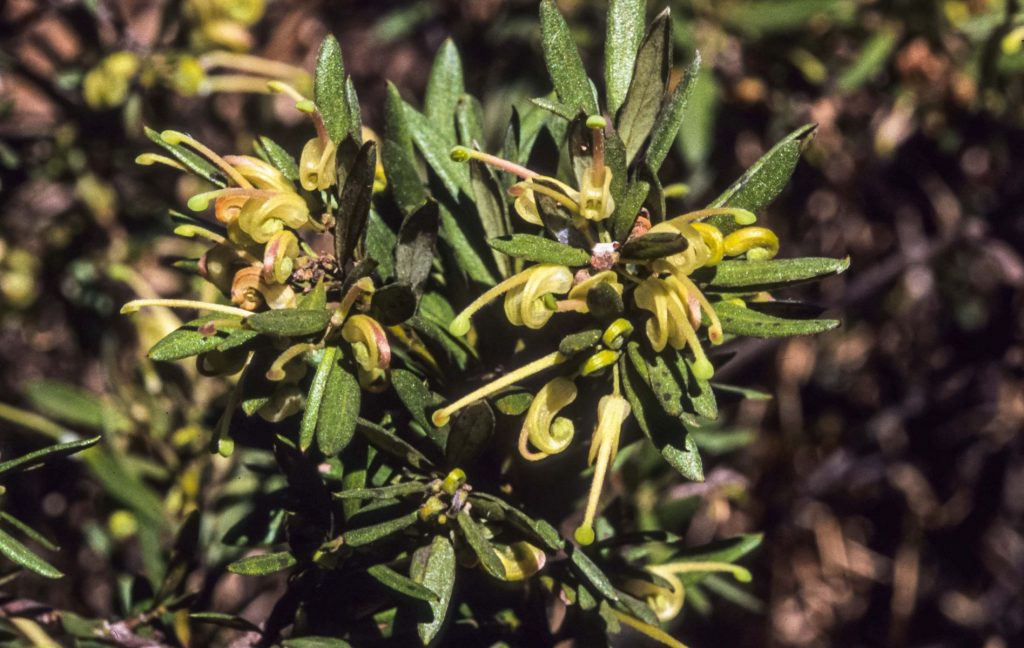
Grevillea kedumbensis – A shrub to 1 m high with a lignotuber. It is naturally restricted to an area between the Kedumba Valley and Scotts Main Range (near Yerranderie, west of Lake Burragorang in NSW).
Banksia blechnifolia
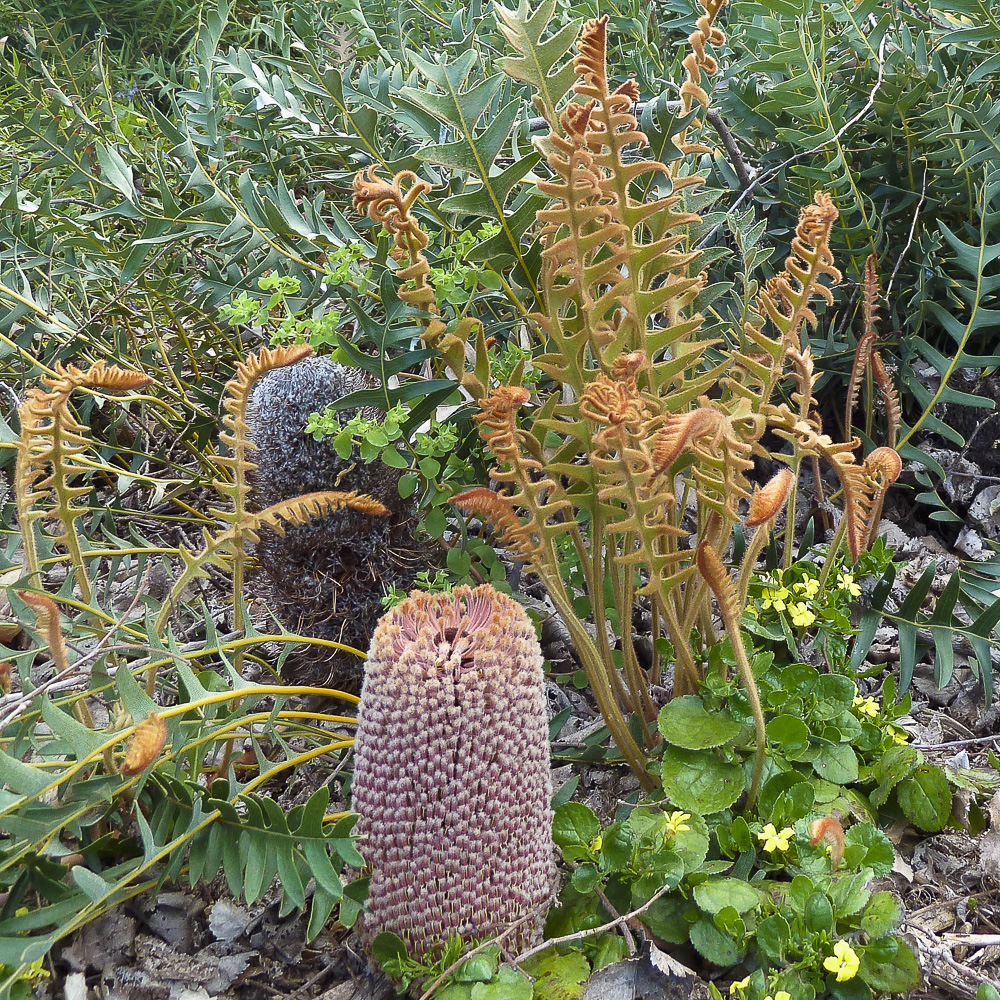
Banksia blechnifolia – A prostrate banksia from WA which generates much interest as it grows along the ground.
Banksia vincentia
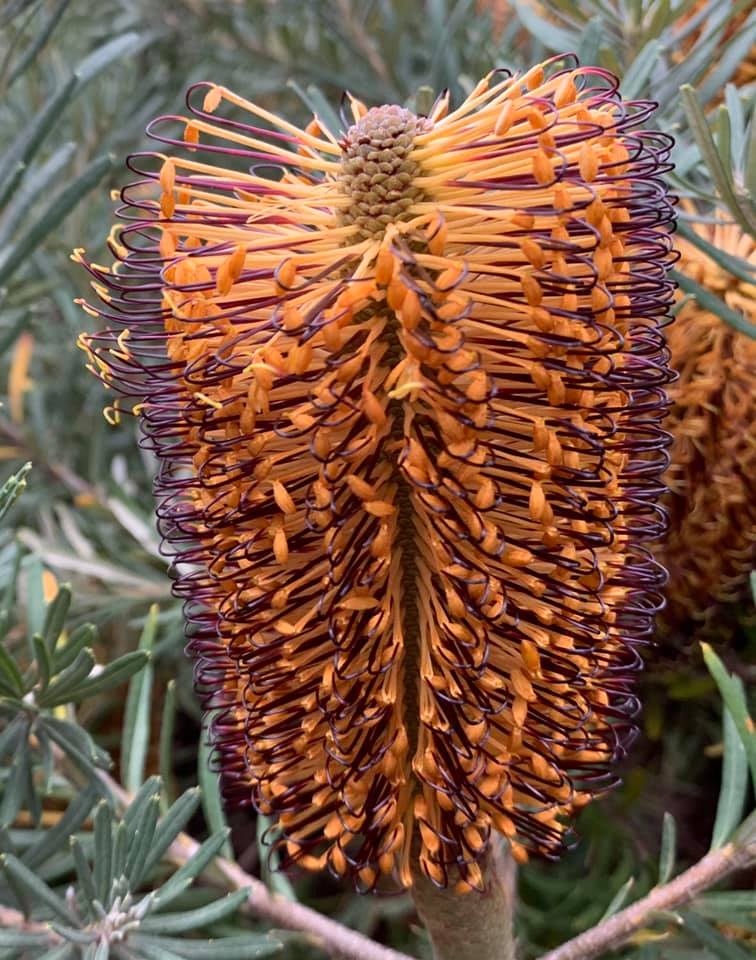
Banksia vincentia – A very rare banksia, only recently found in the wild, which grows to only 1 m tall but can spread to 2 m wide, bearing a lignotuber. It has mostly prostrate stems which curve up (decumbent) at terminals.
Banksia nivea
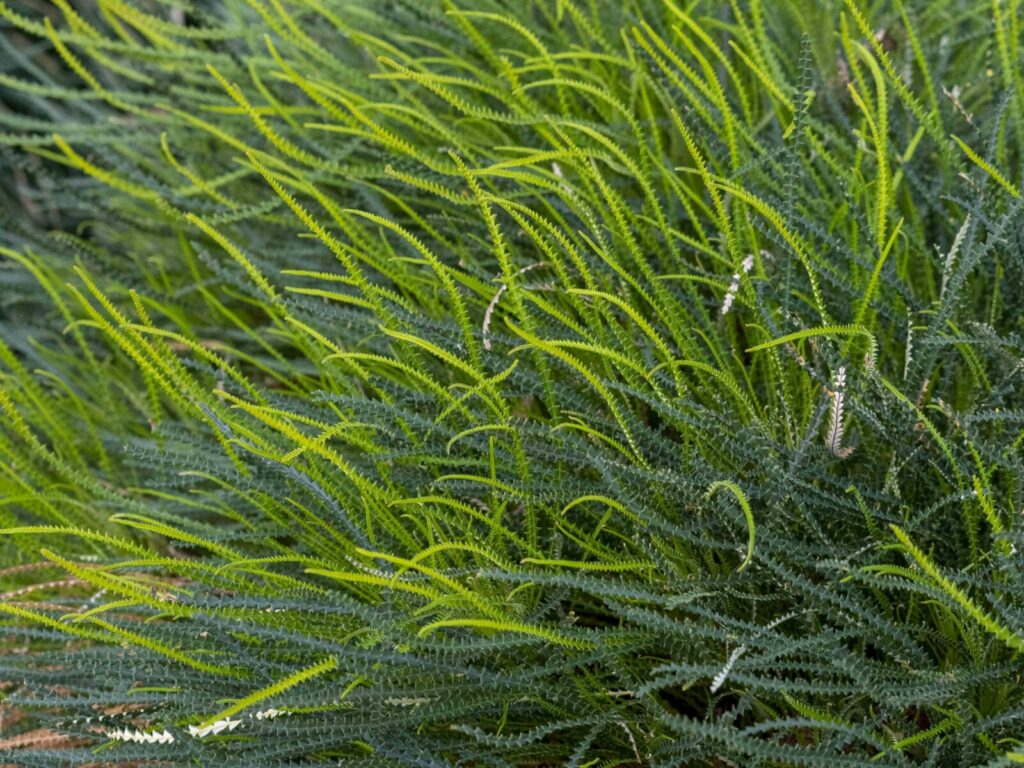
Banksia nivea – A ground-covering small shrub-banksia from WA, found naturally in the south-west of WA, from Geraldton, extending south and east through Perth, Albany and Esperance.
Eutaxia myrtifolia
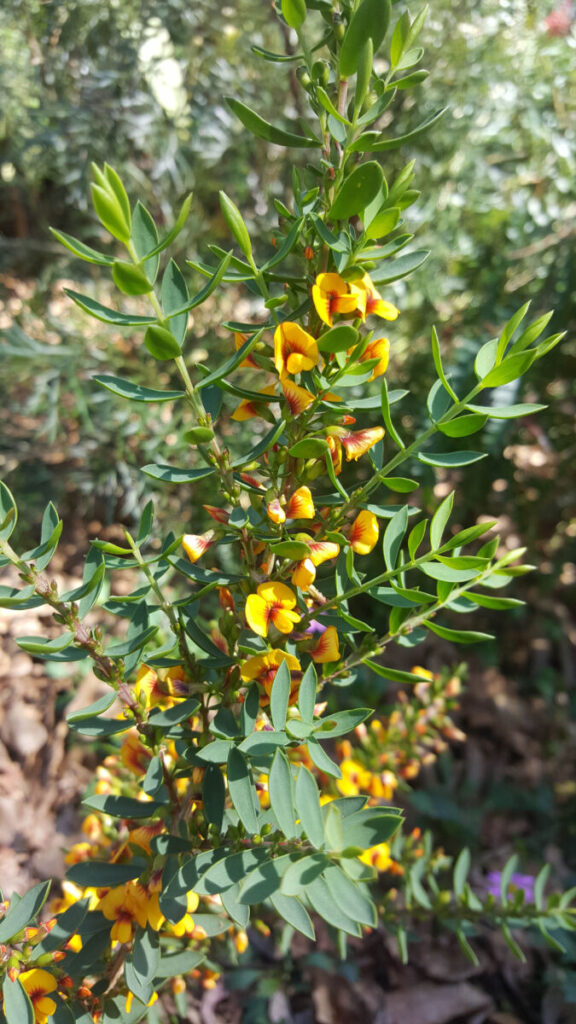
Eutaxia myrtifolia – A shrub to about 1 m tall which grows only in moist karri forests in S-W Western Australia.
Abutilon otocarpum
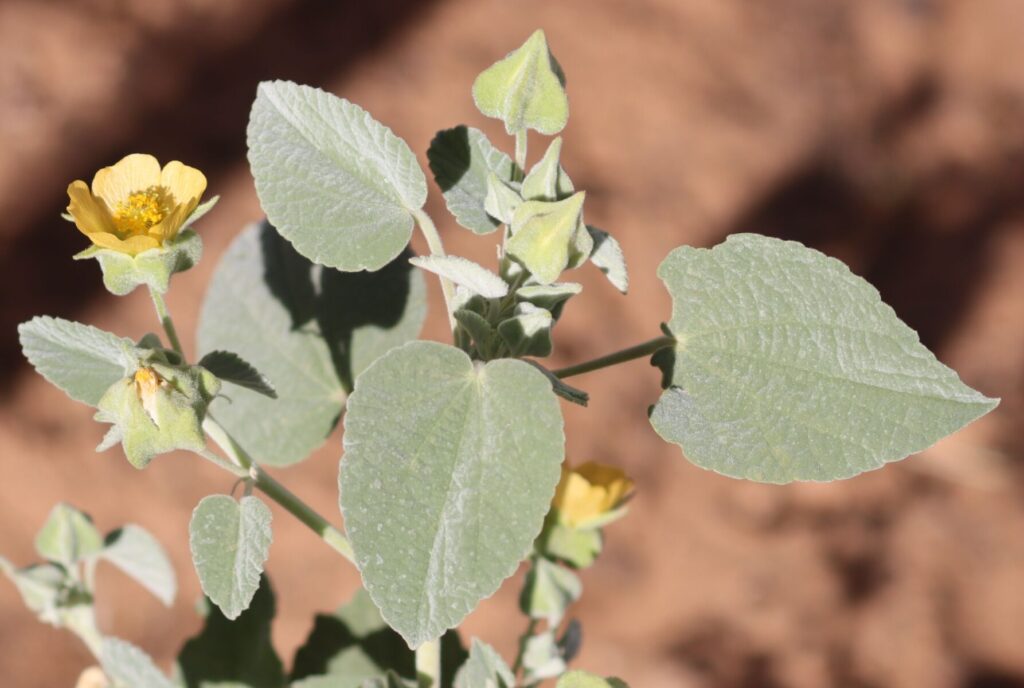
Abutilon otocarpum is a small shrub to about 0.7 metres tall, found on the western plains on NSW, in semi-arid conditions; on red sandy soils, sand rises and dunes. It is also found in all other mainland states in similar habitats.
Actinotus helianthi
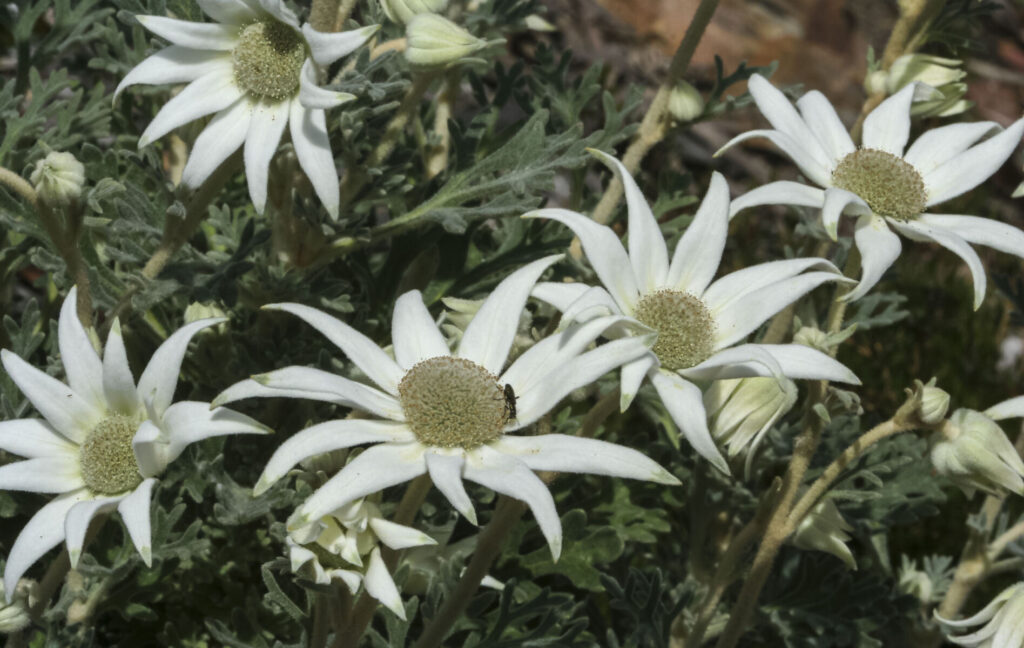
Actinotus helianthi is A soft-wooded shrub, growing to one meter in good conditions. It grows mainly in coastal NSW, in open forest and woodland as well as heaths. It also grows inland on the western slopes and tablelands extending into southern Queensland, as far north as Carnarvon Gorge and Isla Gorge, in sclerophyll woodland and shrublands.
Acacia gunnii
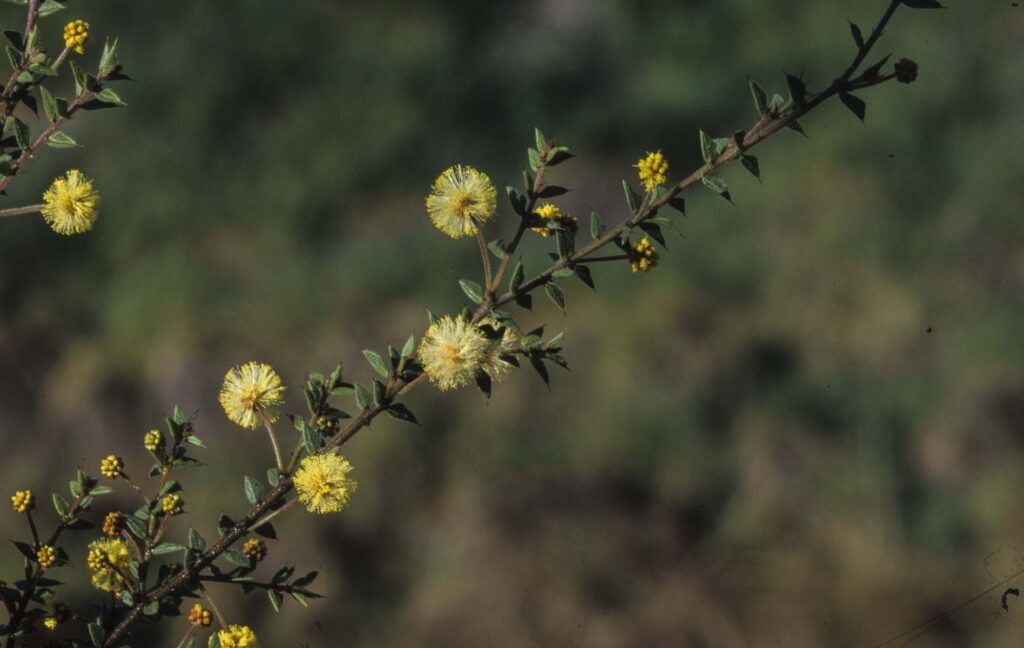
Acacia gunnii grows to 1 metre high and wide in dry sclerophyll communities, in various soil types. Widespread in New South Wales (western areas of coastal subdivisions, tablelands and western slopes), as well as South Australia, Victoria, Tasmania, Australian Capital Territory, and Queensland.
Acacia bynoeana
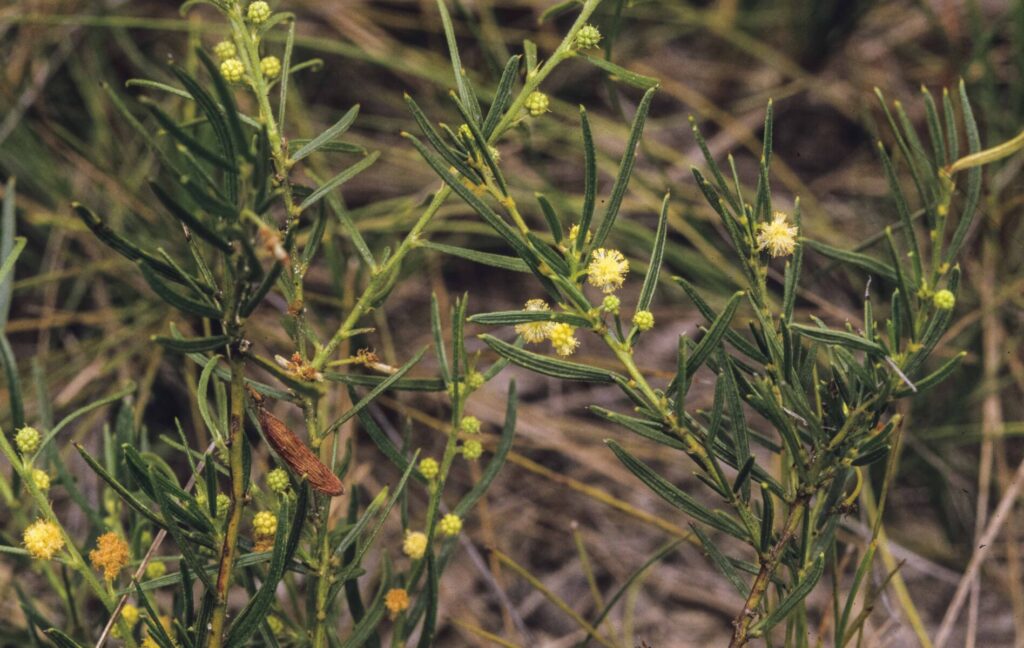
Acacia bynoeana is a small shrub growing to 0.5 m high, in heath and dry sclerophyll forest, in sandy soils. It has a limited distribution in NSW, found mainly south from Morisset area to the Illawarra region, west to the Blue Mountains and it is uncommon in the wild, hence it is listed as a threatened species in NSW.
Acacia baueri
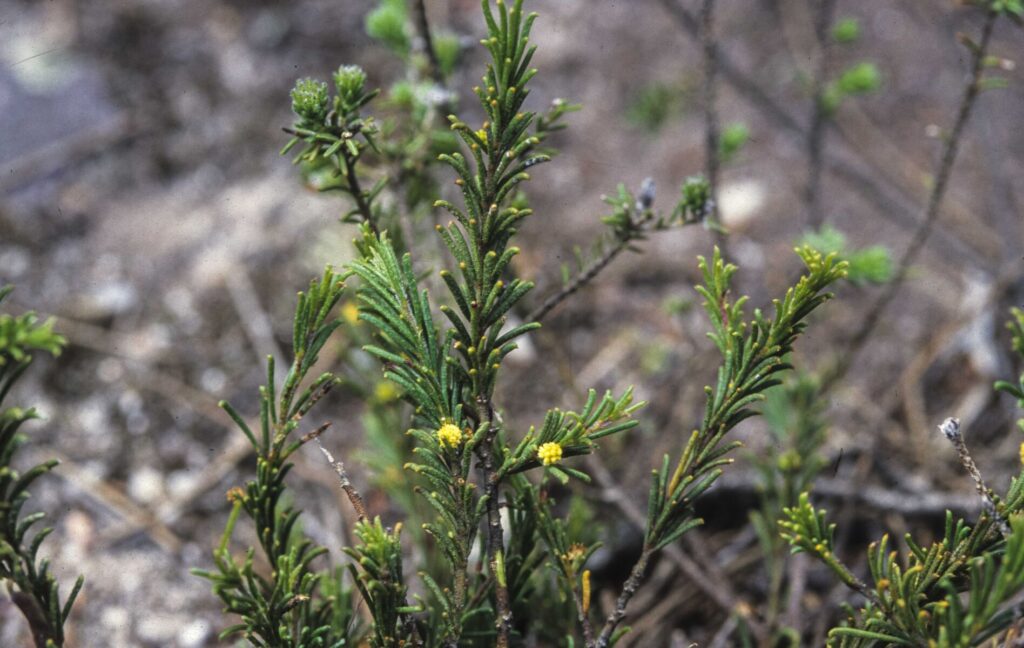
Acacia baueri is a small shrub to 1 m tall, with a decumbent to spreading habit with hairy and warty branches. It grows mainly along the coast, north from the Illawarra Region of NSW, up into Qld.
Philotheca nodiflora var. lasiocalyx
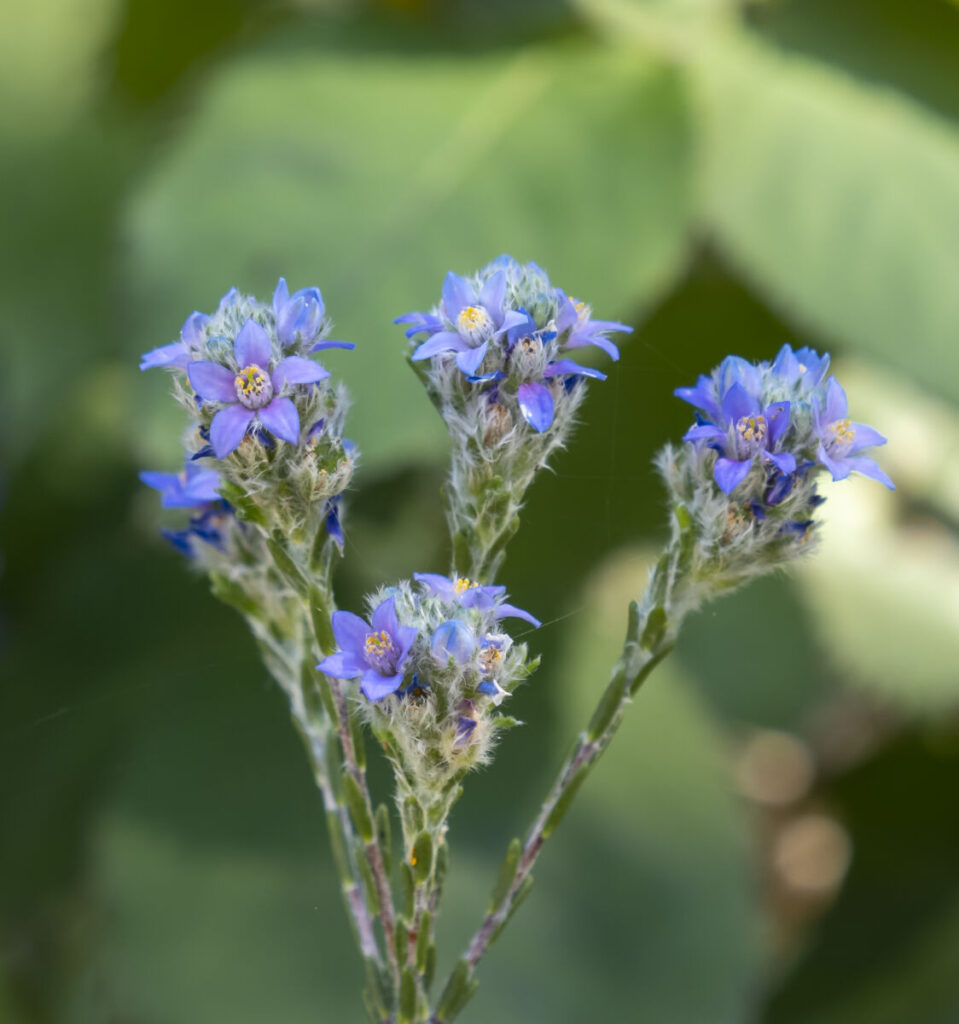
Philotheca nodiflora var. lasiocalyx is a small upright shrub about 50 cm tall by 30–50 cm wide which forms a ground cover. It has fine hairy grey foliage which has a strong aroma when crushed, due to the volatile oils. The terminal clusters of delicate lilac-blue 5-petaled flowers ageing to purple appear in late winter to early spring and are about 10–15 mm in diameter.
Grevillea synapheae
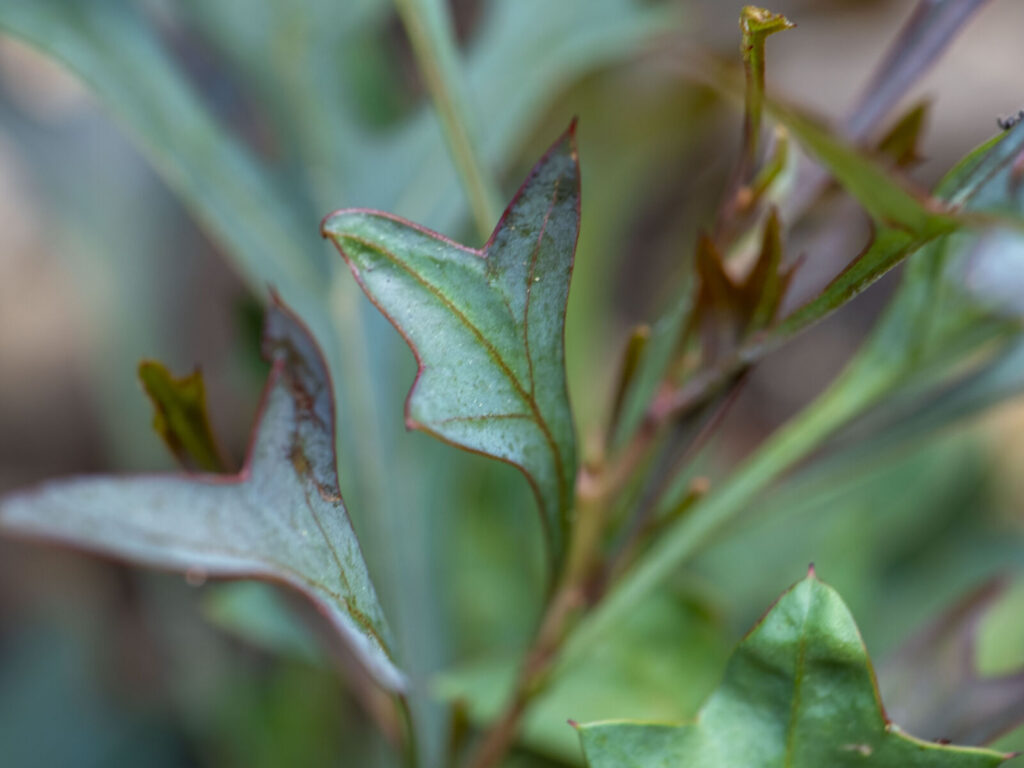
Grevillea synapheae is a highly ornamental and hardy spreading shrub to 20-40 cm high by 1 to 1.5 m wide and can form a solid groundcover. It has attractive slightly glaucous foliage and bronzy new growth. The leaves are normally divided into 3 to 7 lobes. It flowers profusely with clusters of cream to yellow flowers over a long period from late winter to spring. The shape of the inflorescences resembles a catkin, a type of inflorescence produced in plants like birches, beeches and oaks.
Epacris microphylla
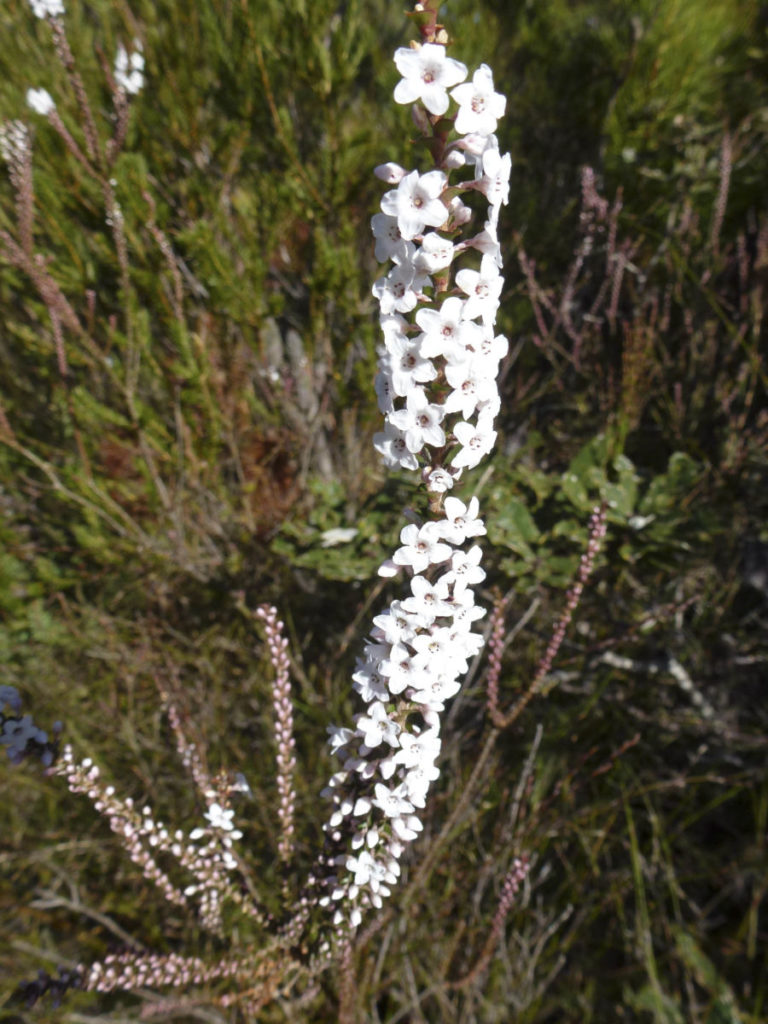
Epacris microphylla is an attractive and hardy plant to 1 m when grown in well-drained soil. It needs a consistently moist but not over wet soil. Prune after flowering to keep compact and promote flowering and mulch around the base to help retain soil moisture. A good container plant.
Hovea linearis
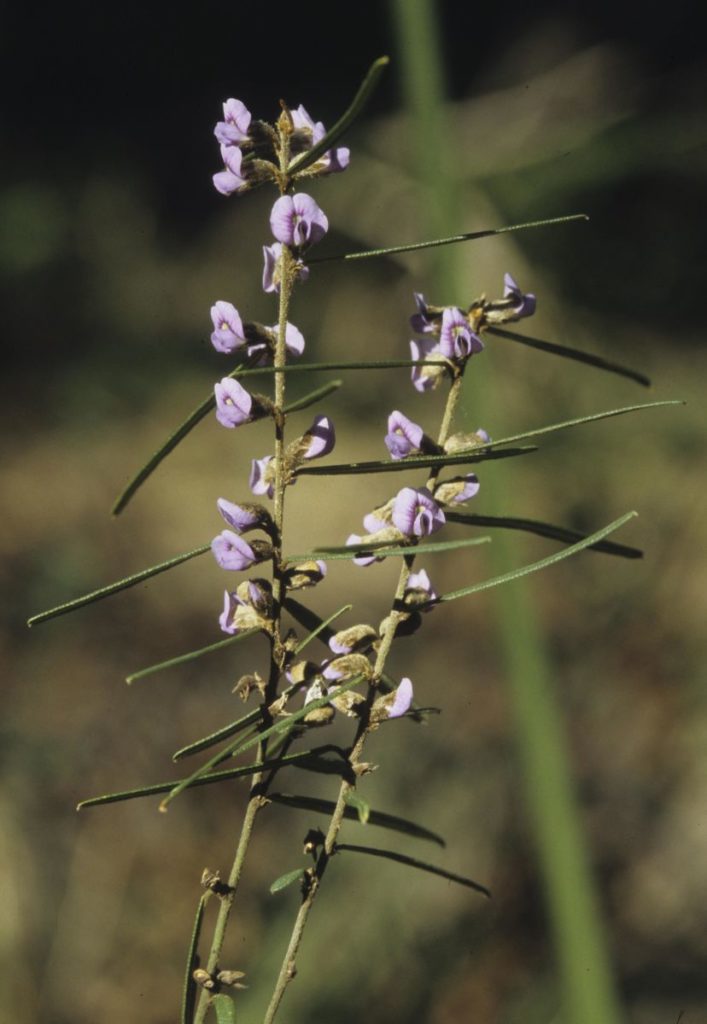
Hovea linearis occurs predominantly in NSW on the coast, between Newcastle and Nowra but extends to the tablelands and western slopes; also in south-eastern Queensland. Mainly found in sandstone in dry sclerophyll forests and woodlands.
Dampiera purpurea
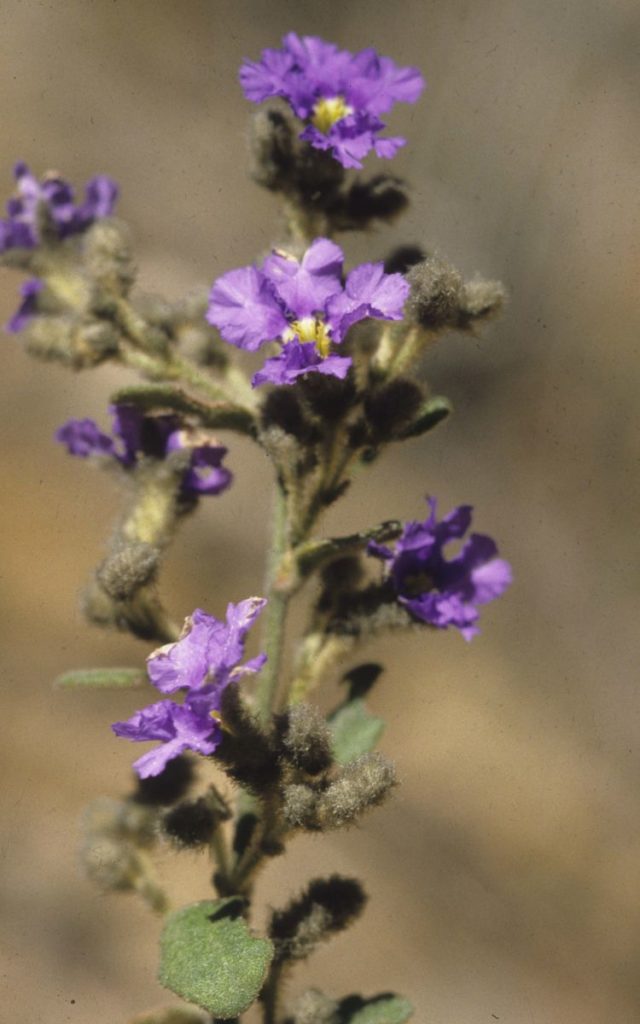
Dampiera purpurea is widespread in open eucalypt woodland in Victoria, New South Wales and Queensland in eastern Australia. A small perennial suckering shrub that reaches 1 to 1.5 metres high and can spread to 2 metres across. It has erect angular woody stems that are sparsely branched and densely hairy. Leaves are 1–6 cm long, 0.5–2.5 cm wide.
Verticordia plumosa
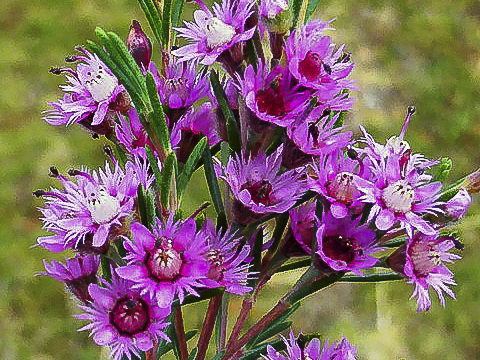
Verticordia plumosa is a member of the Myrtaceae family and there are about 100 species in the genus. With the exception of a few species, found in northern Western Australia and the Northern Territory, the lion’s share of verticordias occur in the south-west of Western Australia. Their common name is Featherflowers.
Veronica arenaria
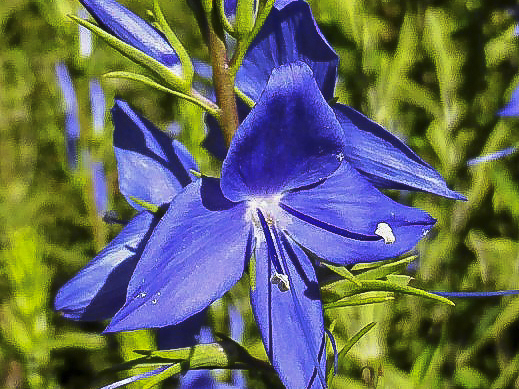
Veronica arenaria is a member of the Scrophulariaceae family in company with the exotic Snapdragons and Foxgloves. Veronica arenaria is a small, multiple-stemmed shrub. The stems are usually upright. The light green leaves may be entire or with irregular lobes. The flowers are produced in terminal racemes. They vary in colour from pale violet-blue to deep violet-blue and are both profuse and extremely conspicuous.
Prostanthera serpyllifolia
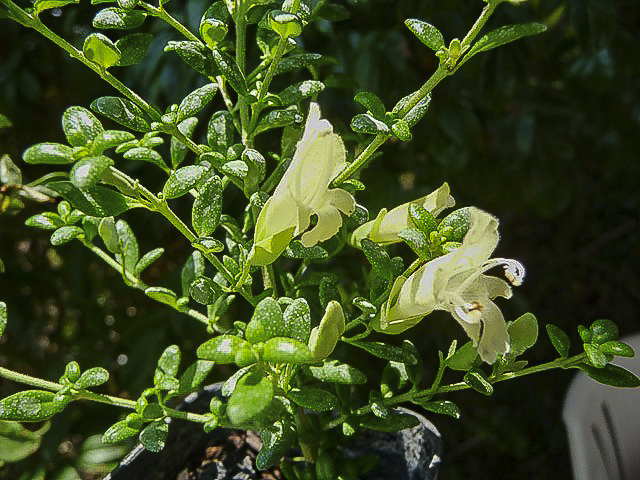
Prostanthera serpyllifolia is known as the Thyme-leaved Mintbush. It is a dwarf, spreading shrub reaching a height of one metre with a similar spread. Small leaves are one centimetre long, ovate, deep green, crowded and glossy. As with most mintbushes the foliage is aromatic and rather attractive.
Prostanthera sejuncta
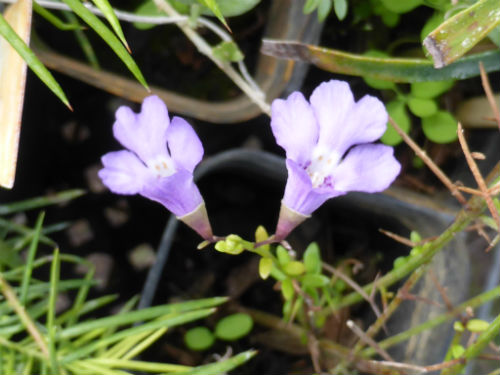
Prostanthera sejuncta, Spiny Mintbush, is a scrambling; more or less prostrate ground cover that may reach a height of 50 centimetres. Many spreading branches have small, ovate, aromatic leaves that are pale to deep green above and paler beneath.
Melaleuca violacea
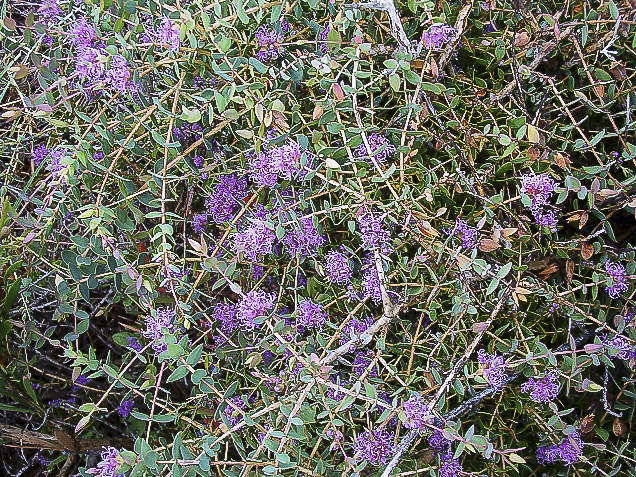
Melaleuca violacea is a native of Western Australia and is a small shrub, reaching a height of less one metre with a spread of 1.5 metres. This species has layered branches that form an interesting flat top. Mauve-purple flowers are carried in lateral or axillary clusters during spring. The clusters are small but what the blooms lack in size they make up for in quantity. During the flowering period the stems are covered in flowers.
Melaleuca incana ‘Velvet Cushion’
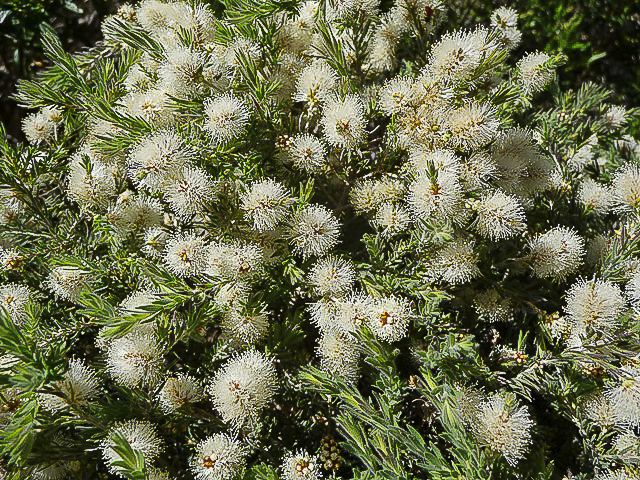
Melaleuca incana ‘Velvet Cushion’ is a dwarf form of Melaleuca incana and develops into a compact, rounded shrub 60 centimetres high by 60 centimetres wide. Soft, hairy grey leaves are carried on pendulous branches. Small cream brushes appear in late spring and early summer.
Melaleuca ‘Ulladulla Beacon’
Melaleuca ‘Ulladulla Beacon’ is a low growing form of M. hypericifolia that was selected from a wild population on coastal headlands near Ulladulla, New South Wales. The cultivar was registered in 1985. ‘Ulladulla Beacon’ is a low, spreading mounded ground cover that reaches a height of 50 centimetres with a spread of at least 1.5 metres.
Kunzea badjaensis
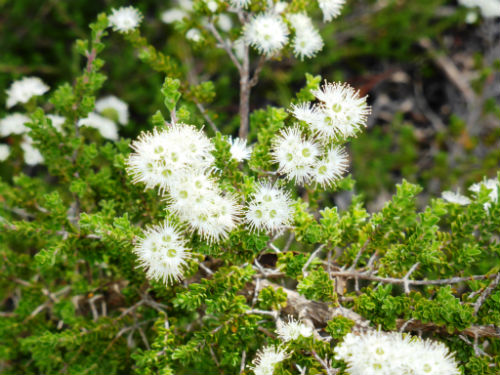
Kunzea badjaensis is a mounded groundcovering shrub, with a spread of several metres, growing to a height of around 1 metres but often less.
It is a rare kunzea, relatively recently described, found only in NSW, at high altitudes on the southern tablelands on Big Badja Mountain in Deua National Park and further south in Wadbilliga National Park, north-east, east and south-east of Cooma.
Isopogon petiolaris
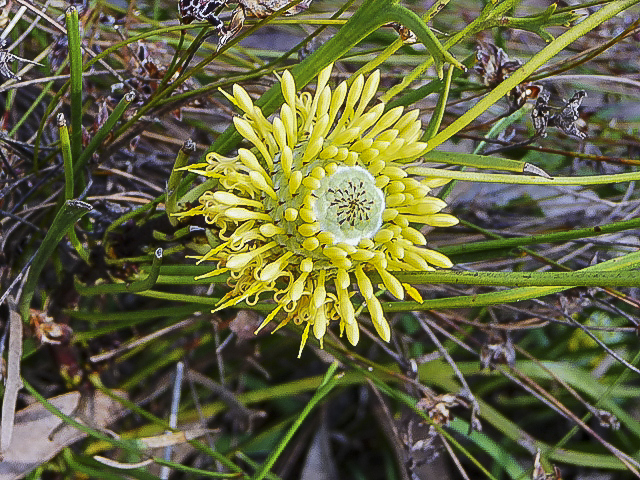
Isopogon petiolaris is an eyecatching low mounded ground cover usually less than one metre high by one metre across. Light green leaves are lobed and up to 14 centimetres long. The petiole (or leaf stalk) is nine centimetres long which is two thirds of the leaf length. The species name refers to the lengthy petiole. The yellow flowers are carried in terminal globular clusters, at least two centimetres across and appear in the warmer months.
Grevillea scortechinii
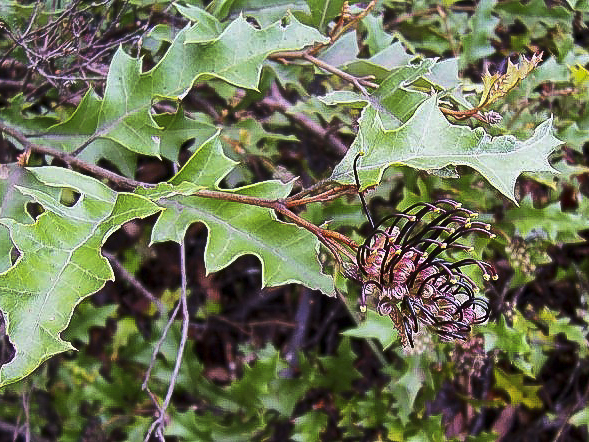
Grevillea scortechinii is known as the Black Grevillea and is a spreading almost prostrate shrub with branches extending to at least 1 metre. Prickly, holly-like leaves are up to six centimetres long, dark green with a leathery texture. Unusual toothbrush flowers are black or very dark maroon and up to 50 millimetres long. This flower colour is unusual in Grevilleas in particular and Australian plants in general.
Grevillea rosmarinifolia ‘Lutea’
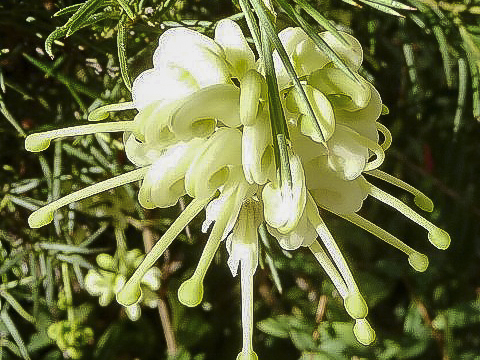
Grevillea rosmarinifolia ‘Lutea’ is a small shrub reaches a height of 40 cm with a spread of 50 cm. The leaves are light green, 2 cm long, linear with a sharp point. Flowers are cream with a waxy texture and held in large, conspicuous clusters. The lengthy flowering period extends from winter to late spring.
Grevillea ‘Forest Rambler’
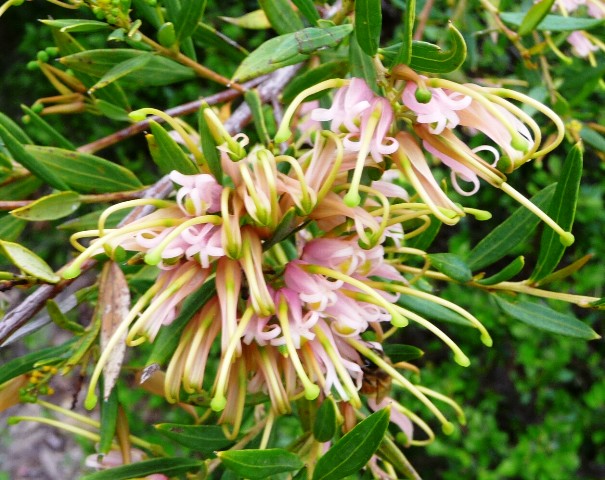
Grevillea ‘Forest Rambler’ is said to be a hybrid between Grevillea shiressii and one of the umpteen forms of Grevillea juniperina. It is a spreading shrub with bright green, prickly leaves and unusual translucent pale purple-pink flowers. Spring is the main flowering period although some flowers may appear at other times. The flowers are rich in nectar.
Callistemon ‘Firebrand’
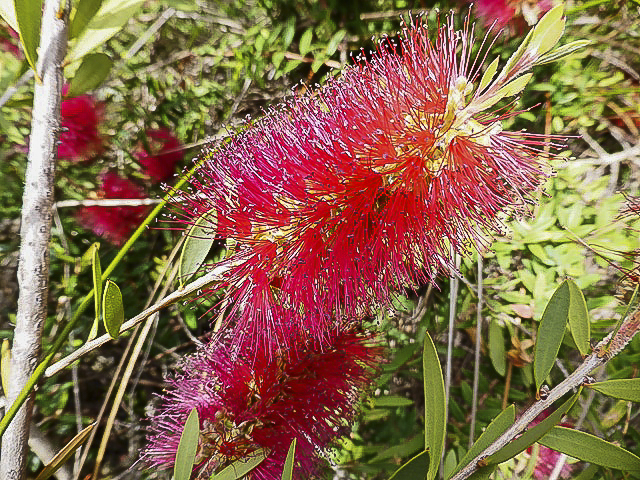
Callistemon ‘Firebrand’ is a low spreading, dense ground cover that reaches a height of 50 centimetres with a spread of over one metre. Adult leaves are stiff and shiny with oil dots while new growth is soft and pink. The brushes are a rich crimson-pink and appear in profusion from spring to autumn.
Micromyrtus ciliata
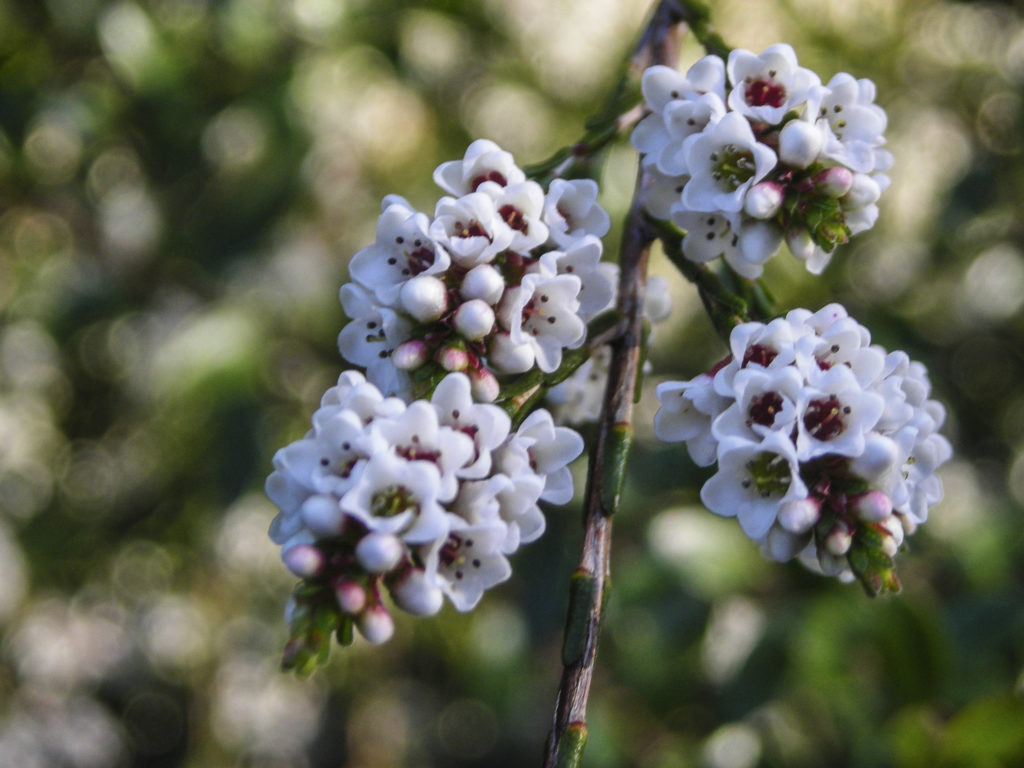
Micromyrtus ciliata is found from south-eastern New South Wales through western Victoria to south-eastern South Australia and grows in a variety of habitats from sandy coastal heaths to rocky slopes. It is a low spreading shrub with long arched and tapered branches. The plant will grow to about 1.2 metres wide and up to one metre high.
Prostanthera aspalathoides

Prostanthera aspalathoides is a dwarf, erect shrub that reaches a height of one metre. The small, crowded leaves are deep green and, typical of most mintbushes, very aromatic. Tubular flowers are two centimetres long and come in a range of colours including red, orange, yellow and cream. The upper and lower lobes are equal in length.
Prostanthera cuneata
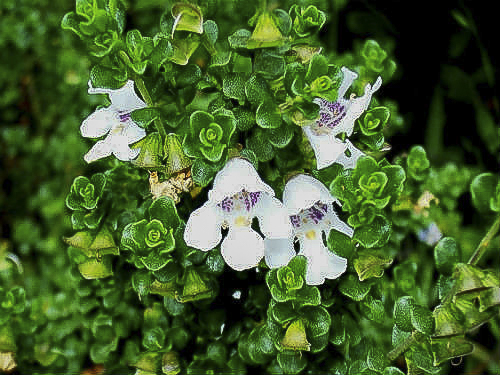
Prostanthera cuneata, Alpine Mint Bush, is a delightful dwarf to medium spreading shrub. The strongly aromatic leaves are roughly oval in shape and taper to the base. They are dark green above and paler beneath. Flowers are 1.5 centimetres long and white with coloured blotches in the throat. They are said to be sweetly fragrant.
Spyridium scortechinii (syn. Stenanthemum scortechninii)
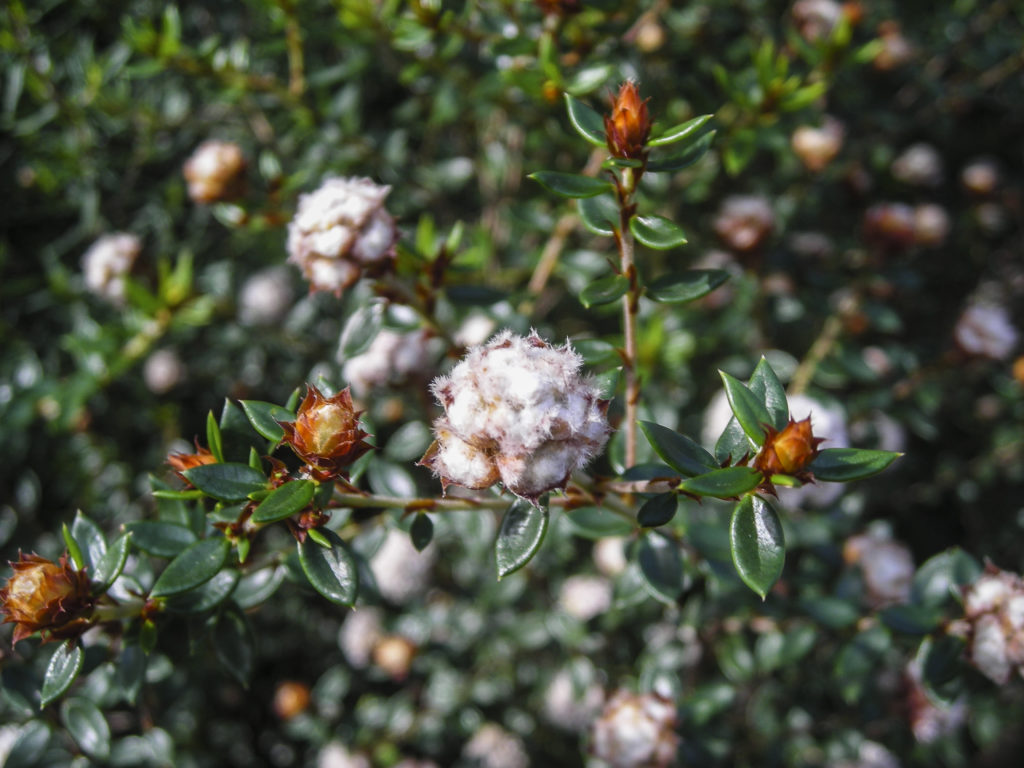
Spyridium scortechinii is a small, rounded shrub that reaches a maximum height of 80 cm to 1.5 metres with a spread of 60 centimetres. Lanceolate leaves are about 2 centimetres long. Masses of white, woolly flowers are carried in dense terminal heads and cover plants in spring.
Thryptomene baeckeacea
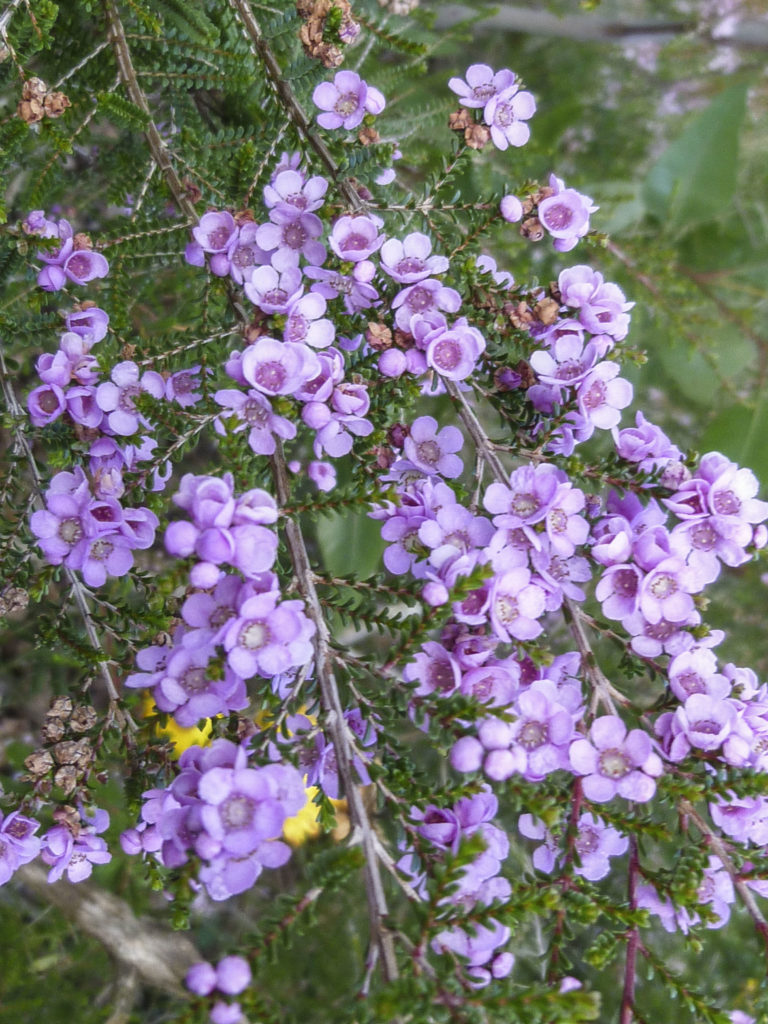
Thryptomene baeckeacea is one of the myrtle family and has profuse tiny pink or white or pinky mauve flowers in clusters from May to October, as well as spot flowering during summer and autumn. When purchasing this plant, it is best to do so when it is flower so you know what the flower colour is. It grows to about one metre high (or a bit less) and about 1.2m wide with a slightly weeping habit.
Lysiosepalum involucratum
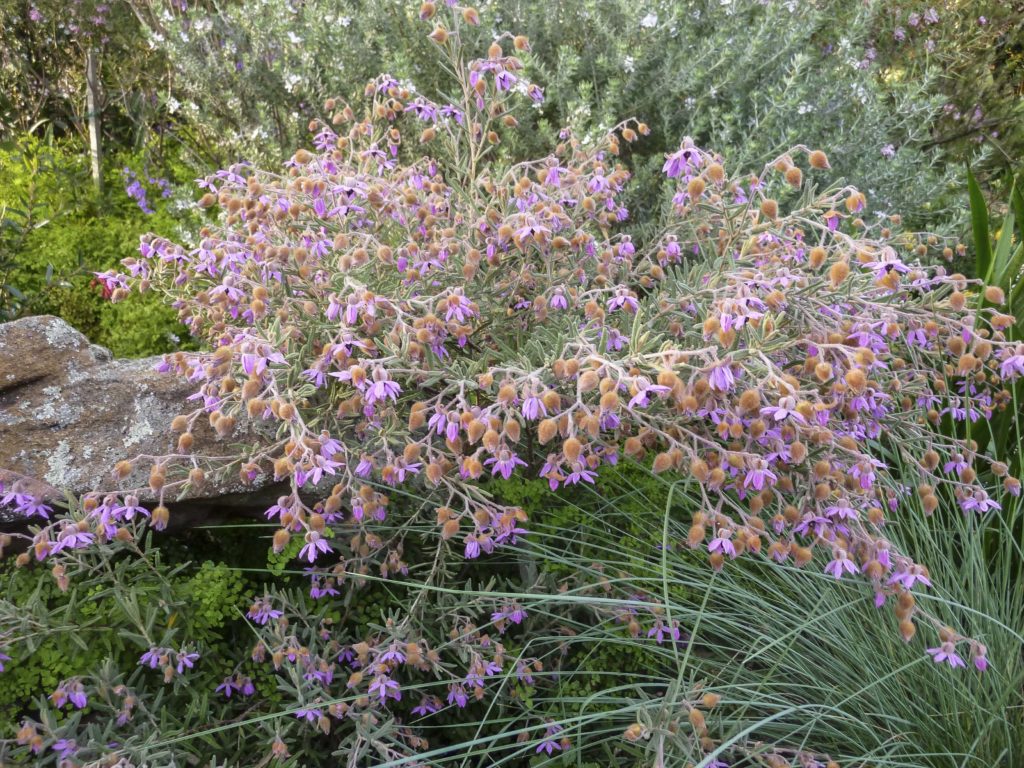
I have been growing Lysiosepalum involucratum for many years, in my garden in the northern Sydney suburb of Westleigh. It is a small rounded shrub that grows to about 60 cms high and one metre wide and produces masses of pink to mauve cup shaped flowers, from late winter to spring. The petals are very small and the sepals provide the colourful parts of the flowers. The rough, narrow leaves are 10 – 25 mm long and grey-green in colour.
Lissanthe strigosa
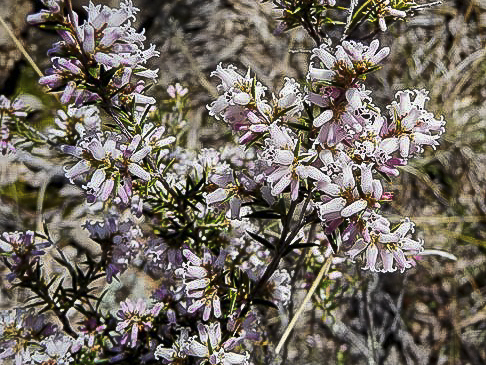
Lissanthe strigosa is a member of the Ericaceae family and is known the Peach Heath. Lissanthe strigosa is one of a number of small shrubs that have regenerated on our property Yallaroo east of Armidale, after sheep were removed. Lissanthe strigosa is a small, upright shrub reaching a height of one metre. The species is said to sucker but we have seen no evidence of suckering.
